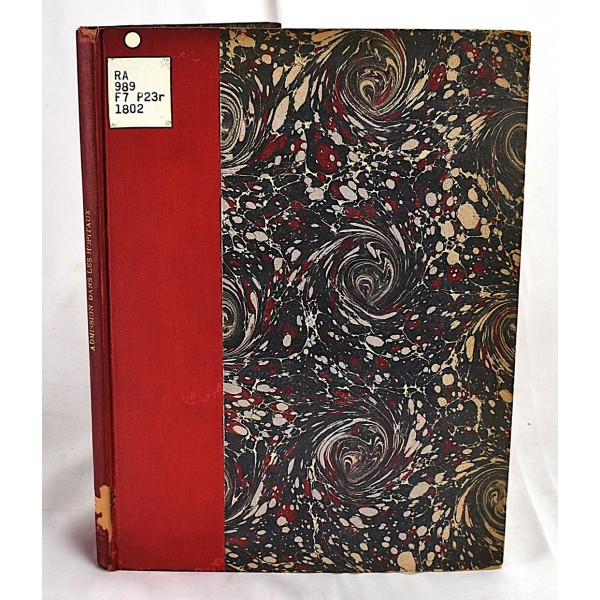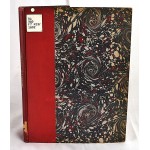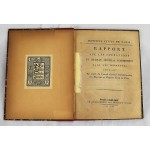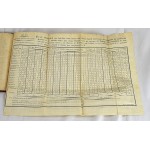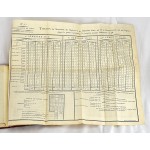Hospices Civils de Paris. Rapport sur les Operations du Bureau Central D'admission dans les Hopitaux
Hospices Civils de Paris. Rapport sur les Operations du Bureau Central D'admission dans les Hopitaux
Conseil general d'administration des hospices
Impr. des hospices civils, Paris, 1802
[Interesting provenance, previously owned by Henry Barton Jacobs, then later by noted medical scholar Owen Hannaway.] Bound in red cloth over marbled boards. Hardcover. Library stamps and markings. Shelf wear. Gutters starting. Bookplate of Jacobs on verso.
Henry Barton Jacobs was a educator and physician from Maryland. Jacobs came to Baltimore to become the private physician for Robert Garrett, who was then president of the Baltimore and Ohio Railroad. After Garrett's death in 1896, Jacobs joined the faculty of the Johns Hopkins University School of Medicine, retiring in 1905. He actively participated in organizations directed toward the treatment and eradication of tuberculosis. In 1911, Jacobs was elected a trustee of The Johns Hopkins Hospital, a position he held until his death. William Osler was considered a universal friend by physicians of his era but, as with most people, his intimate friends were few. Henry Barton Jacobs became a close friend as one of the 'latchkeyers' who lived next door to the Oslers in Baltimore, and the friendship intensified after Jacobs married Mary Sloan Frick Garrett, the fabulously wealthy widow of a former patient. The couples stayed close after the Oslers moved to Oxford, vacationing together and corresponding frequently. The couple friendship between the Oslers and the Jacobses benefited American medicine in specific ways, including the care of patients with tuberculosis and the care of children.
From the library Dr. Owen Hannaway. Hannaway was director of the Center for the History and Philosophy of Science at Johns Hopkins University. He authored numerous books and served as an editor of academic magazines in the history of science. Partial list of publications: Chemists and the Word: The Didactic Origins of Chemistry (1975); Observation, Experiment, and Hypothesis in Modern Physical Science (1985); The Evolution of Technology (1989); Science and the Practice of Medicine in the Nineteenth Century (1994); and The Foundations of Modern Science in the Middle Ages: Their Religious, Institutional and Intellectual Contexts (1996).
